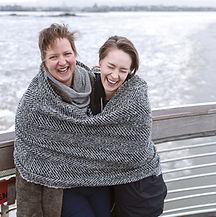Embodied Perspectives


Could I gain knowledge of the civet through our shared biological processes?
Maybe with the help of a coffee cherry.
Biography
Through the medium of art, literature, storytelling and ethnography, we collectively explore the shared heritage held between humans and animals within global commodity chains. Specifically, we investigate kopi luwak, the world’s most expensive coffee, traditionally produced from the excrement of civets.
With the rise of capitalism, civets’ relationships to humans have been transformed from one of fleeting local encounters to being an exploited other, as commodifiable goods and cultural symbols. Increasingly confined for industrialized kopi luwak production and tourism, civets find themselves ensnared within a politically and economically driven world of human-civet domination.
As an interdisciplinary collaboration between anthrozoologists and visual artists, we seek to problematize the commodification of wild animals and their “products”. Our collaborative work traverse the concept of “becoming with” another species by instrumentalising our own human bodies. By uilising that in which we physically share with civets we attempt to create a new form of storytelling where the animals' perspectives are observed through our shared biological processes.
On the one hand, explicitly addressing these concerns brings possibilities of positive social change for multi-species coexistence. On the other, our chosen method of multispecies storytelling brings about the need for further ethical consideration. To date, our project has culminated in the following works:
-
80g Human Coffee Beans (the rarest coffee in the world)
-
Video Performance detailing the production process of Human Coffee
-
Scientific article 'Technologies, Bodies and Faecal Matters: Embodied Empathy with Coffee Producing Civets (in Press, Transpositions Journal)
-
SEM images of Human Coffee Beans and videos of the Scan Electron Microscopy process
-
Conference presentations and seminars
-
Auction of 20g Human Coffee (sold at 530Euro, thus exceeding the value of Civet Coffee and securing the status of the worlds most expensive coffee).
All works were displayed as the Human Coffee Room in the Harrie Liveart solo exhibition, hosted by Forum Box, Helsinki in March 2022 where we also presented a coffee seminar followed by the live auction of the worlds first Human Coffee.
Gallery

I instinctively pick one.

My teeth pierces the skin, it is bitter.

There I start selecting, cleaning, peeling, counting.

I'm analytical, calculative, a bit concerned if I will be able to digest this.

We pace back and forth between where we eat and where we shit.

I came across half of the planet, disguised as a tourist to become closer with you.

One must form conclusions with delicacy.

Consumptionism pushes the civet to transgress from wild animal towards a biomechanical, mouth to anus, production line
Reviews

Sini Mononen, Culture Journalist, Helsingin Sanomat
The project combining animal ethics and avant-garde performance art is artistic research at its best: serious, surprising, unique and impressive at the same time.

Anonymous Peer Reviewer, Transpositions Journal
“A highly innovative, transdisciplinary initiative, bridging a gap between science, art and humanistically-oriented animal studies… The concept of using researchers' bodies as both a research tool and research subject in order to scrutinize non-human experience, is bold, fresh and unconventional - and can no doubt provide a meaningful contribution to the field of human-animal studies.”



